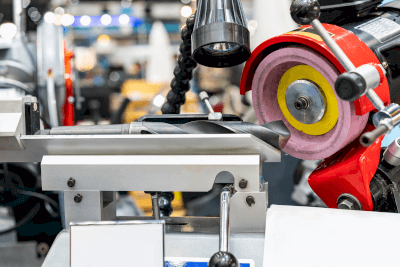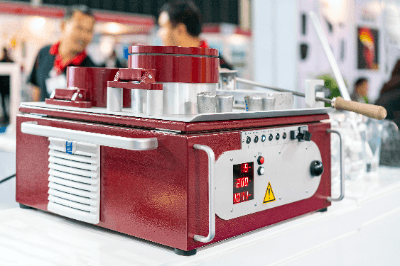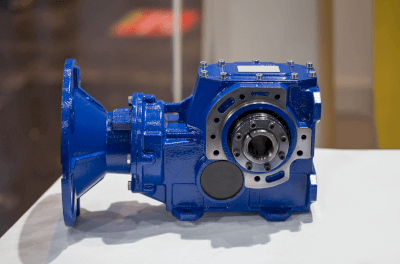What Is a Durometer?
A durometer is a device used to measure the hardness of materials. It is used especially on non-metallic substances such as rubbers, plastics and elastomers.
Hardness is defined as “a measure of the degree of force exerted by an object on another object to resist it”. There is no uniform unit of hardness, since the force applied by another object varies depending on the purpose, such as bending, elongation, torsion, etc. T
Therefore, different durometers are used for different purposes and for different applications.
The following are typical test methods for hardness:
- Brinell
- Vickers
- Rockwell
- Knoop
- Shore
- UCI (Ultrasonic Contact Impedance)
Hardness between different test methods cannot be compared as is. By using a hardness conversion table, they can be compared relatively.
Uses of Durometers
1. Hardness Testing by Indentation
- Brinell Hardness Tester
Measurement is made with a microscope or other optical device. It can handle higher loads (up to 3000 kg) than other measuring instruments and is suitable for large samples with rough surfaces. - Vickers Hardness Tester
This is measured by an optical device such as a microscope. In contrast to Brinell hardness measurement, in which the hardness value obtained varies depending on the test load even if the same indenter is used, Vickers hardness measurement is superior in that the influence of differences in test load is almost negligible. It can measure a wide range of samples, from soft to hard, and is used for clinical testing, especially in the field of dentistry. - Rockwell Hardness Tester
Unlike Brinell hardness testers and Vickers hardness testers, Rockwell hardness testers can measure quickly without optical equipment. Diamond conical indenters are mainly used, but steel or cemented carbide balls are used when measuring relatively soft samples such as soft steel, malleable cast iron, copper alloys, and aluminum alloys. They are mainly used to measure heat-treated steel materials. - Knoop Hardness Tester
Suitable for measuring light loads of a few grams, and used to measure cracks and coatings on ceramics and other materials.
2. Hardness Test by the Magnitude of Rebound of Hammers, Etc.
- Shore Hardness Tester
This tester can measure without damaging samples and is easy to operate. No power supply is required, and since it is compact and portable, large structures such as rolling rolls and railroad rails can be tested on site.
3. Other Testing Methods
- UCI (Ultrasonic Contact Impedance) Hardness Tester
The principle of UCI hardness measurement is based on Vickers hardness measurement. It has a smaller indentation mark than other test methods and can be used for thin and delicate parts. On the other hand, it is also used for large samples that are portable and cannot be moved.
Principle of Durometers
1. Principle of Brinell Hardness Measurement
A spherical indenter is pressed against a sample for 10~15 seconds, and the surface area S (mm2) is calculated from the test load F (N), indenter diameter D (mm), and dent diameter d (mm) to obtain the hardness.
Brinell Hardness (HBS) = 0.102 × (test load F/indentation surface area S)
= (0.102 × 2F)/{πD(D-√(D2-d2)}
2. Principle of Vickers Hardness Measurement
A diamond pyramid indenter with a facing angle of 136° is pressed against the sample, and the surface area S (mm2) is calculated from the test load F (N) and the diagonal length d (mm) of the indentation to obtain the hardness.
Vickers hardness (HV) = test load F/indentation surface area S
= 2Fsin68°/d2 = 1.854 F/d2
3. Principle of Rockwell Hardness Measurement
A diamond cone indenter with a 120° apex angle is pressed against the sample in the order of (ⅰ) to (ⅲ)
Hardness is measured from the difference in indentation depth between( ⅰ )and (ⅲ).
It is necessary to select a load at which the indentation depth is less than 1/10 of the sample thickness.
4. Principle of Knoop Hardness Measurement
A diamond square-weight indenter with diagonal angles of 172°30′ and 130° is pressed against the sample. The indentation is calculated from the surface area S (mm2) obtained from the test load F (N) and the long side diagonal d (mm) of the indentation.
The same testing machine is used as for Vickers hardness measurement.
Knoop hardness (HK) = 14229F/d2
5. Principle of Shore Hardness Measurement
A diamond hammer is dropped at right angles to the sample and the hardness is measured by the height of the rebound. The harder the sample, the higher the rebound.
Eutectoid carbon steel is used for hardness between 30 and 95 HS, and super eutectoid carbon steel for 100 HS.
6. Principle of UCI (Ultrasonic Contact Impedance) Hardness Measurement
A diamond indenter is pressed against a sample for approximately 0.5 seconds at a specified load. The resonance frequency that changes at this time is electronically read to measure the hardness.
Durometers for Metals
There are various types of durometers, some of which are suitable for certain materials and others for others. The following are examples of hardness durometers used for metals:
- Brinell hardness is mainly used to evaluate the average hardness of materials with inconsistent metallurgical structure, such as castings and forgings. It leaves relatively large measurement marks. It is also necessary to polish the measurement surface of the specimen prior to measurement.
- Rockwell Hardness is used to evaluate the surface hardness of heat-treated materials at the site of heat treatment of steel materials. This measurement method is suited for measuring relatively large materials and has little measurement error due to differences in the measurers. Various indenters are available according to the combination of reference load and test load.
- Vickers Hardness is used to evaluate hardness and coating hardness after surface hardener treatment, and to evaluate the cross section of welding materials and welding conditions. It also has the advantage that the same measuring element can be used regardless of the material of the specimen.
- Shore hardness is used to measure the hardness of metal materials after quenching, tempering and nitriding. Measurement of large materials is also possible.
Portable Durometer
Handheld hardness testers are available for measuring the hardness of sponges, rubbers, and plastics.
Portable hardness testers for metals are also available, although they are simpler than the simple tabletop durometers. The same indenter is used for the same type of measurement method, and multiple hardness units can be displayed by conversion.



